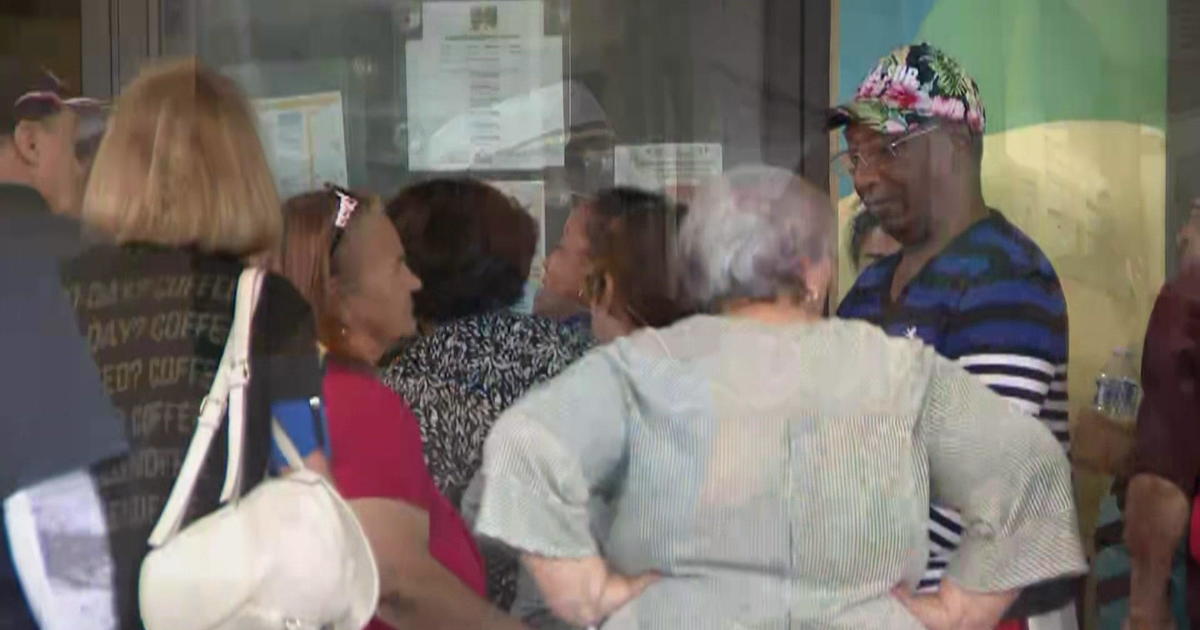Diners At Brickell Restaurant Order From iPad-Equipped Tables
MIAMI (CBSMiami) – For those fed up with uppity waiters and cranky waitresses, D-Dog House in Brickell has the solution: cut them out altogether.
Customers aren't greeted by a waiter. Nor do they step up to a counter like in a fast-food restaurant.
Instead, each table is equipped with an iPad, from which customers can order their food with no human intervention, reports CBS4 news partner The Miami Herald.
Waiters confirm orders with customers, bring the food from the kitchen when it's ready, and are available to accept payment and help customers who need it. But customers can enter and leave the eatery with little interaction with a human employee.
If this technology is widely adopted, it has the potential to drastically cut labor costs at many restaurants — and put many waiters out of work.
Sean Raee, owner of D-Dog House, said he has fewer servers because of the iPads.
His original idea was to have only the iPads and no servers. But Raee said because of his Brickell location, 50 SW 10th St., he couldn't put his customers in a fully automated restaurant.
"They demand a certain level of service and we are going to give it to them," Raee said. "I think they value the combination of the two."
Indeed, restaurants will have to tread carefully when adopting this technology. For example, high-end restaurants may want to use iPads to replace paper menus or provide wine suggestions matched to a given entree, but customers will expect a human waiter.
"For upper level restaurants, where servers are so important, the iPad can tell you the menu of the day," said Patrick Mason, a labor economist at Florida State University. "But the iPad is not going to come around and see if everything is OK and if you like your meal."
Automated ordering is still in its infancy. D-Dog House is the first local customer of Aptito, a North Miami Beach-based firm that makes ordering software, although other firms make similar products.
But research suggests that many customers are open to using iPads to order food. The National Restaurant Association said it has found that more than half of consumers would use tableside electronic payment options and 44 percent would use a tableside ordering system.
Much of the trick for restaurateurs will lie in figuring out which camp their customers fall into.
Brian Connors, an associate professor in food and beverage management at Johnson & Wales, said iPads actually could improve service in the restaurant business — at least in the eyes of some customers.
Connors said that younger customers, in particular, want their food their way, and they want it fast. The iPad could eliminate a common customer complaint: time spent waiting for assistance.
"Speed is one of the top overall negative comments. People are always on their own schedules," Connors said. "I think we're going to come into a world of even higher customization."
But other customers may have different priorities, Connors said. Some restaurants will always stick to the traditional paper menu and servers in uniform.
"Traditional guests like the feel of the menus in their hands," Connors said. "You're still going to have the traditional restaurateurs, but the world has changed."
Would you eat at a restaurant that doesn't use waiters/waitresses? Tell us:
Anyone who doubts whether business would really risk alienating customers by replacing some waiters with iPads need only consider their last call to a major corporate customer-service department. Most calls are handled by computers via a jungle of press-one-for-this and press-two-for-that. If the cost savings are big enough, companies will take their chances. Or, as in the case of Apple, charge extra for better customer service.
But with waiters, the business calculation isn't necessarily simple. A waiter isn't just a cost to the owner: She also is a potential profit center. Motivated by the hope of a good tip, she may persuade customers to spend more, or just make them want to come back.
David Talty, a restaurant management instructor at Florida International University's hospitality school said restaurateurs need to weigh the costs and benefits.
"If it becomes a major factor, they will get rid of a lot of servers," Talty said. But, he added: "If I'm a server and you're at the table, I can ask you if you want a side order, or I'd come over and suggest a dessert. None of that happens when you're using an iPad."
But, actually, it does. Aptito's software is capable of suggesting side dishes, for example.
In Florida, the prospect of automated ordering is especially important because of the state's economic reliance on hospitality and tourism. In 2012, the restaurant industry in Florida made up for 841,900 jobs – about 11 percent of employment, according to the National Restaurant Association. And by 2022, Florida restaurants are projected to have created 132,900 new jobs.
These numbers point to the human cost that comes anytime technology takes away a job, whether from a factory worker, a record-store clerk or a waiter.
Such losses will be felt most by those who can least afford them, said Alayne Unterberger, associate research director at FIU's Research Institute on Social and Economic Policy.
"You're putting the squeeze on the low-income labor," she said.
(TM and © Copyright 2013 CBS Local Media, a division of CBS Radio Inc. CBS RADIO and EYE Logo TM and Copyright 2013 CBS Broadcasting Inc. Used under license. All rights reserved. This material may not be published, broadcast, rewritten, or redistributed. CBS4 news partner The Miami Herald contributed to this report.)



